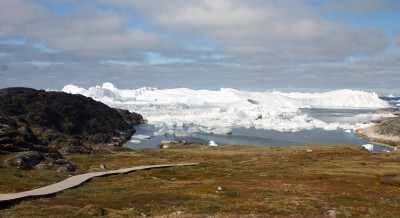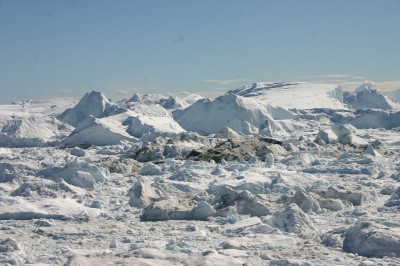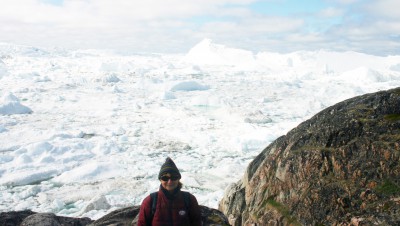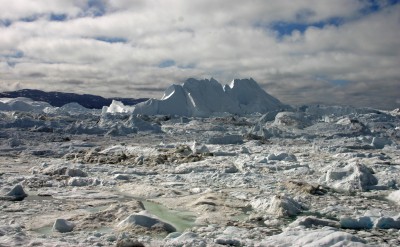
 A hilly,
A hilly,
chilly, blindingly white vista spreads out before me: Ilulissat Icefjord
(Kangia). The fjord, which is a UNESCO World Heritage Site, is jam-packed with
innumerable icebergs and ice floes that create a beautiful, unique and
otherworldly landscape. The enormity of it is astounding and I feel very, very
small.  Here I am wearing my beloved Merino wool hat bought in New Zealand, my winter jacket bought in British Columbia and long underwear bought in Toronto.
Here I am wearing my beloved Merino wool hat bought in New Zealand, my winter jacket bought in British Columbia and long underwear bought in Toronto. 
Much of
Greenland’s enormous ice cap is drained through Ilulissat Icefjord from the
huge glacier Sermeq Kujalleq. The fjord is 70 km long and more than one km deep
and continues under the ice cap itself. Icebergs are produced at the front of
the glacier, where they crack off (“calve”) and float off in the water of the
fjord.

At one area
in the fjord, there is a deposit of gravel and stone left behind by earlier ice
ages. This is the Iceberg Bank, where the fjord is only 200-250 m deep. The
icebergs get stuck here until they melt sufficiently or get pushed and broken
into smaller pieces by icebergs coming up from behind before they continue
their journey out to sea. This journey usually takes about 3-12 months.

The
icebergs from this area then float northwards along the west Greenland coast for a bit before
turning abruptly south to follow the coast of Baffin Island. They then mosey
along the coasts of Labrador and Newfoundland before taking an eastward turn
into the great expanse of the Atlantic Ocean.

The annual
iceberg production from the Icefjord alone is about 46 cubic km – enough to cover
USA’s annual water consumption (2012 figures). This is an increase from 35
cubic km in 2001, probably due to global warming.

